
undefined
undefined
My Epiphyllum Page

I was introduced to Epiphyllum plants by my mother - she had one of those older type red ones(similar to the one on the index page). It was her pride and joy when it flowered. But she grew it in clay soil in a sun porch and it was often covered with spiderwebs. But when it flowered it was dusted off and brought out into the dining room (our main living area) where it had pride of place for the short time the flowers lasted.
I have since learned that they are epiphyte plants and should be grown in a loose bark type of potting mix.
"What is a good potting mix to use for Epis?"
3 parts - potting mix
3 parts - orchid mix
2 parts - sand
4 parts - "Zoodoo" (which is a compost/manure mix produced by the local zoo.

"Nopaloxia"
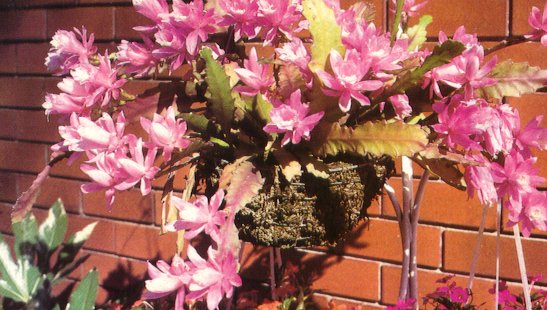
Work on Epiphyllums in Spring !!(with thanks to Epiflora)
Jane Griffith writes about the work we should be doing with our epiphyllum plants...
As the warmer weather comes we may be more inclined to work on our plants. For epiphyllums this involves:
- Cleaning up plants that have suffered over Winter. Cut off unsightly decaying leaves, dusting the cut spot with sulphur to prevent further decay. Gently stir up the top layer of soil and replace it if it is stagnant.
- Begin to fertilise plants - this may be with an application of slow-release fertiliser or by using Phostrogen or a similar fertiliser which encourages the development of buds. Fertilising should continue through the flowering season.
- It is not too late to prune and re-pot epiphyllums but at this time of year we are less severe in our pruning than during Autumn. Remove those older leaves that are unlikely to produce flowers (as buds are setting now these leaves are easily observable). Take care at this time of year not to damage the roots as you re-pot. Some Diazanon crystals in the bottom of the pot will help discourage root mealy bug and mixing slow-release fertiliser with your open potting mix will be advantageous for the plant.
- As November approaches sit back and enjoy all your good work as your plants reward you with beautiful flowers. Be amazed at nature as you observe those neglected plants that you never got round to re-potting or titivating this year flower just as well as those you spent time on!
"Epi.cynthia"
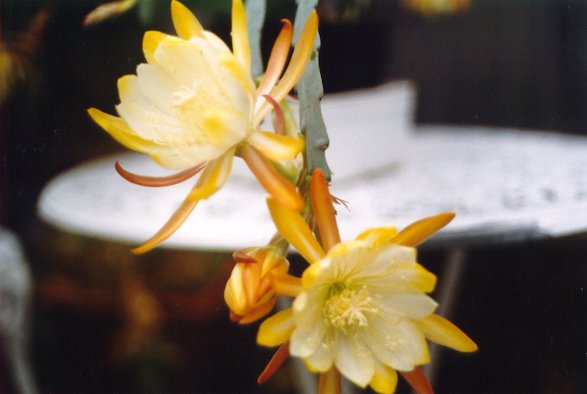
"Epi.lollipop"

"Unnamed Red Epi" (a gift from a friend so I name it after her "Elaine"

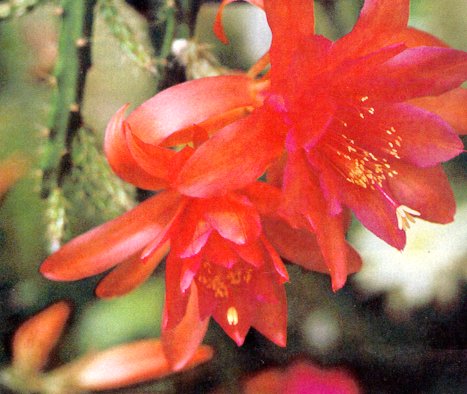

Party Time
(Jane Griffith writes about a medium flowering epiphyllum from her collection). E. Party Time was hybridised by Wressey Cocke, the well known American epiphyllum grower, and registered by Mary Kelly in 1988. In the Griffith's collection it prefers being in a hanging basket, is a prolific grower and produces flowers several times a year. (thanks to Epiflora)
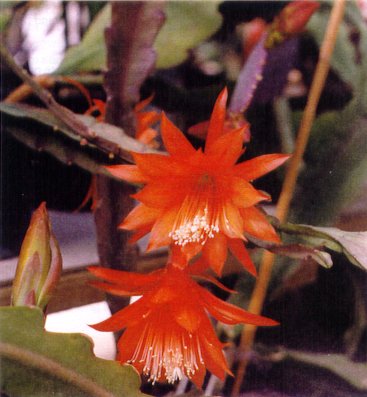
Kami
Jane Griffith writes about an epiphyllum in flower this month (September)
A small flowered epiphyllum hybridised by Wressey Cocke in California. Kami flowers are orange, between 2-4 inches across and a distinct trumpet form.
A profuse flowerer our plant is grown in our shadehouse and first started flowering in early August.
It usually flowers twice in the year so we antiticpate having flowers until the new year.
For those who like small flowered epiphyllums Kami is definitely to be recommended.
Also have the following cuttings - now growing into small plants. -

- Bill Rogers
- Cherry Fizz - small flower; candy pink
- Black Magic
- London delight
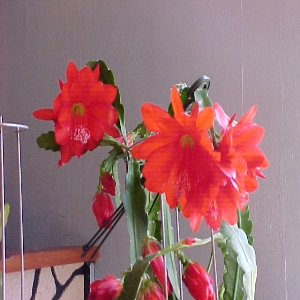
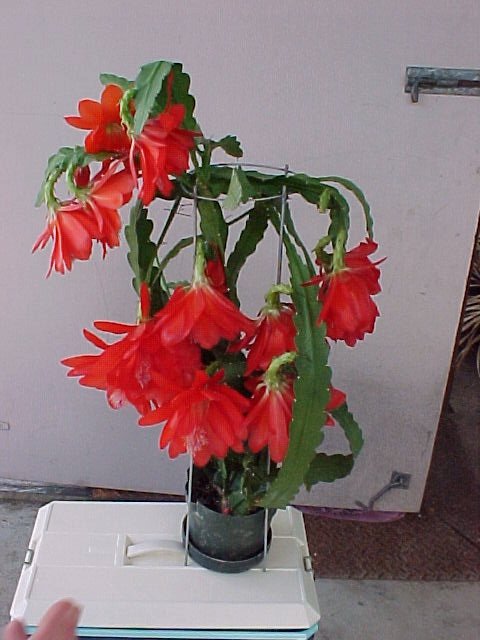 Showing 12 flowers December 1999
Showing 12 flowers December 1999
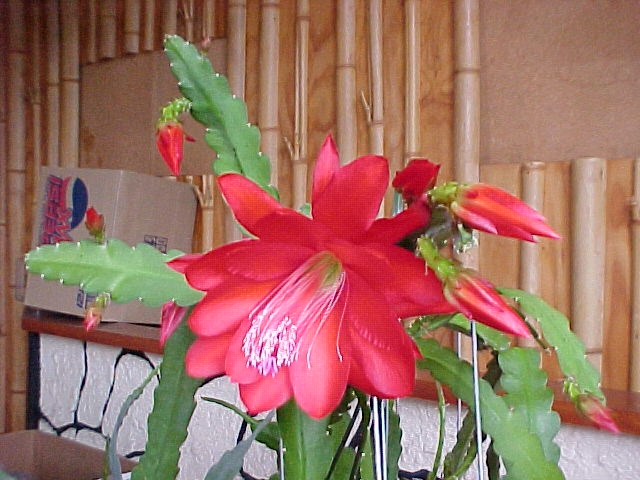
Wellington Epiphyllum & Hoya Society
The benefits of belonging to the society are many; firstly you get to know other people who are interested in the same plants that you are - most grow other plants too.
If you live in the lower part of the north island you can attend all or some of the monthly meetings.
But even if you live in other parts of the country or overseas there is a wonderful journal "Epiflora" that is published quarterly and is of great value.
If you are interested you can contact me at hoyagrower@hotmail.com or our club editor at griffith@globe.co.nz
back to the index page











 Showing 12 flowers December 1999
Showing 12 flowers December 1999
